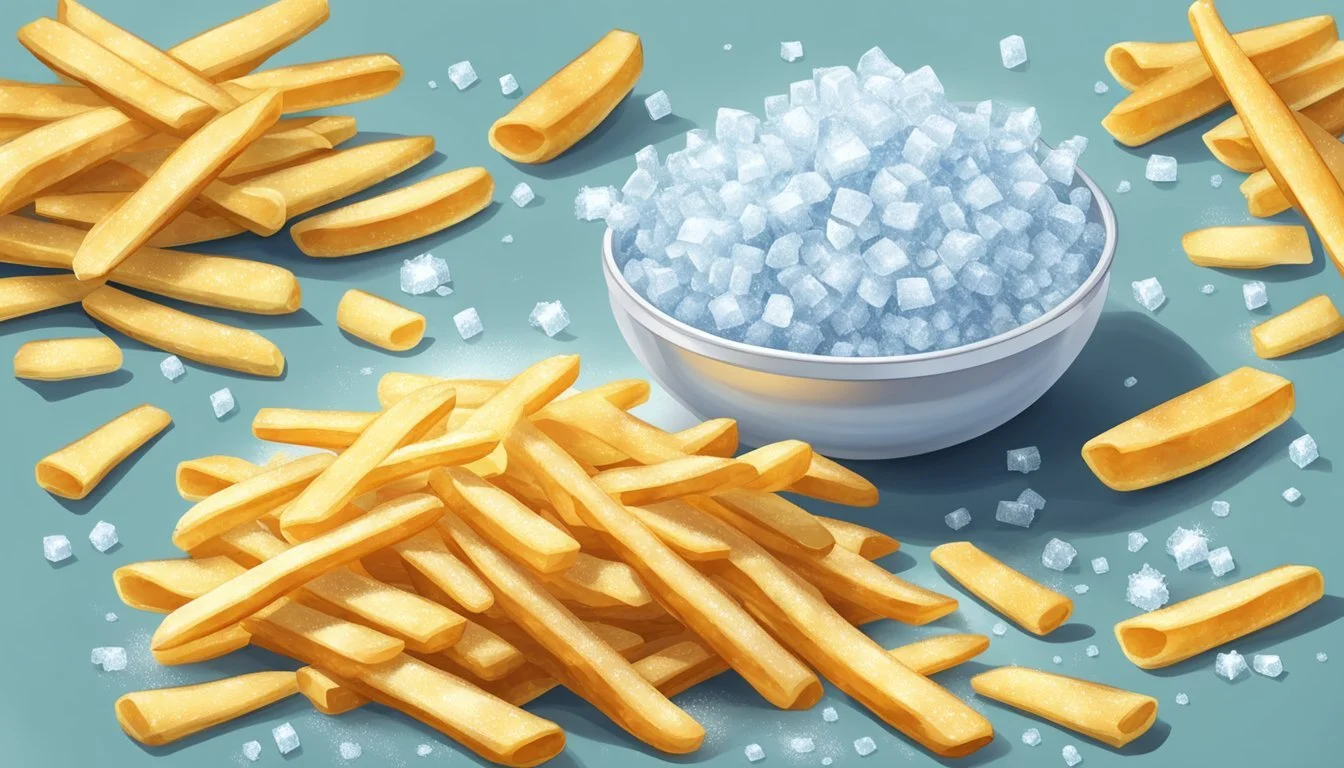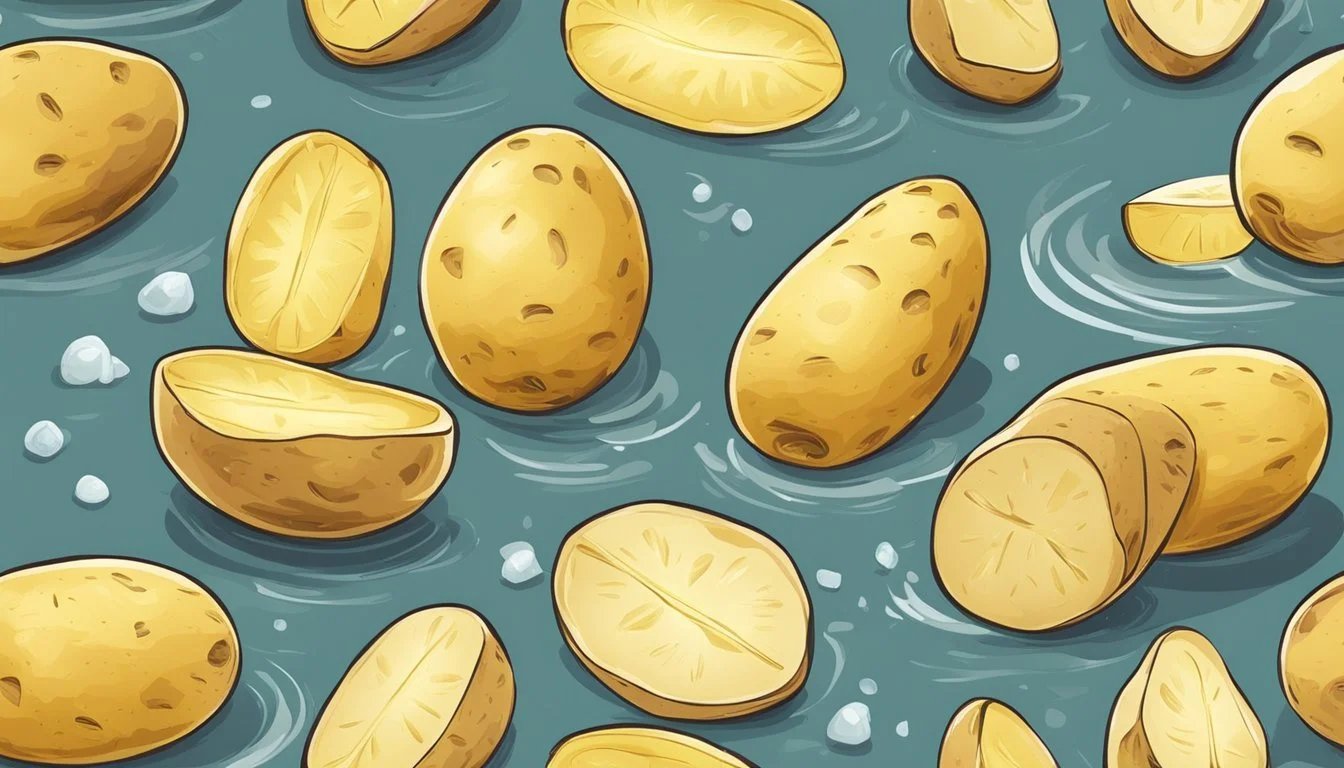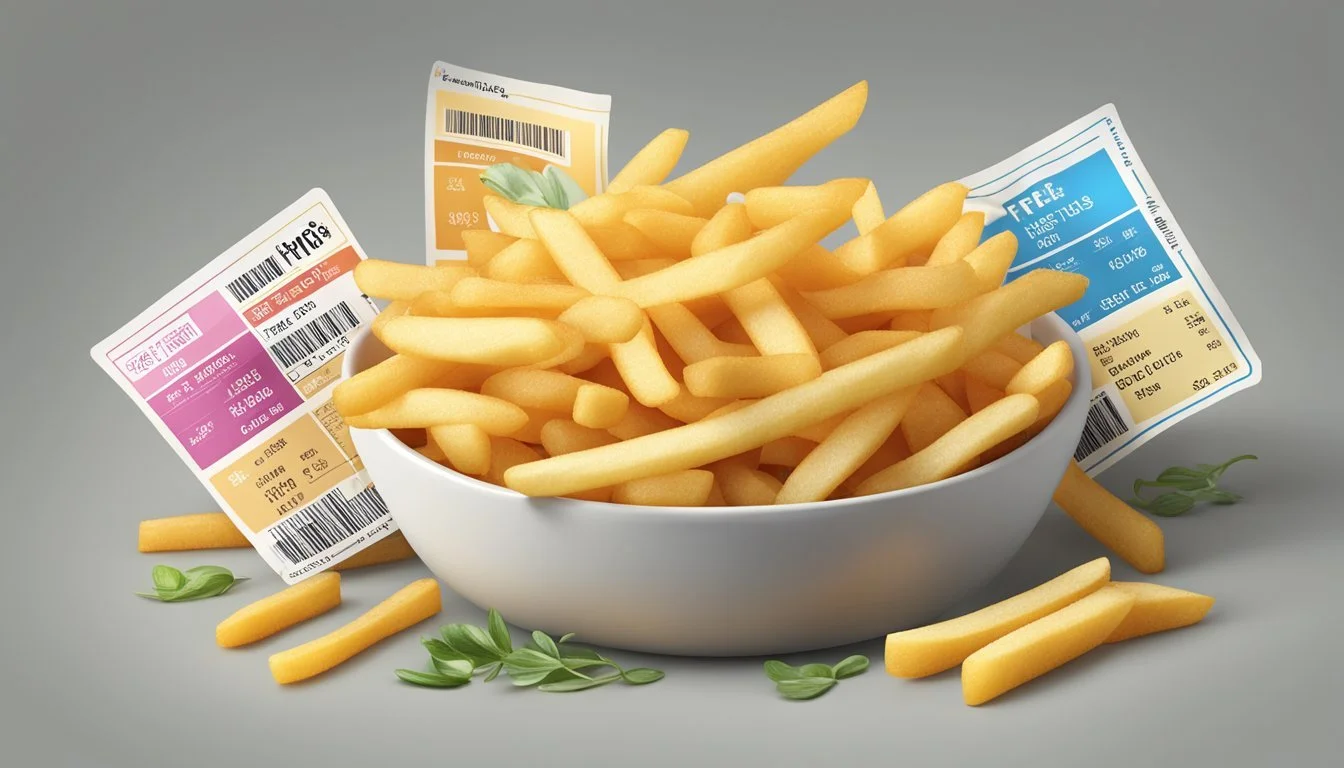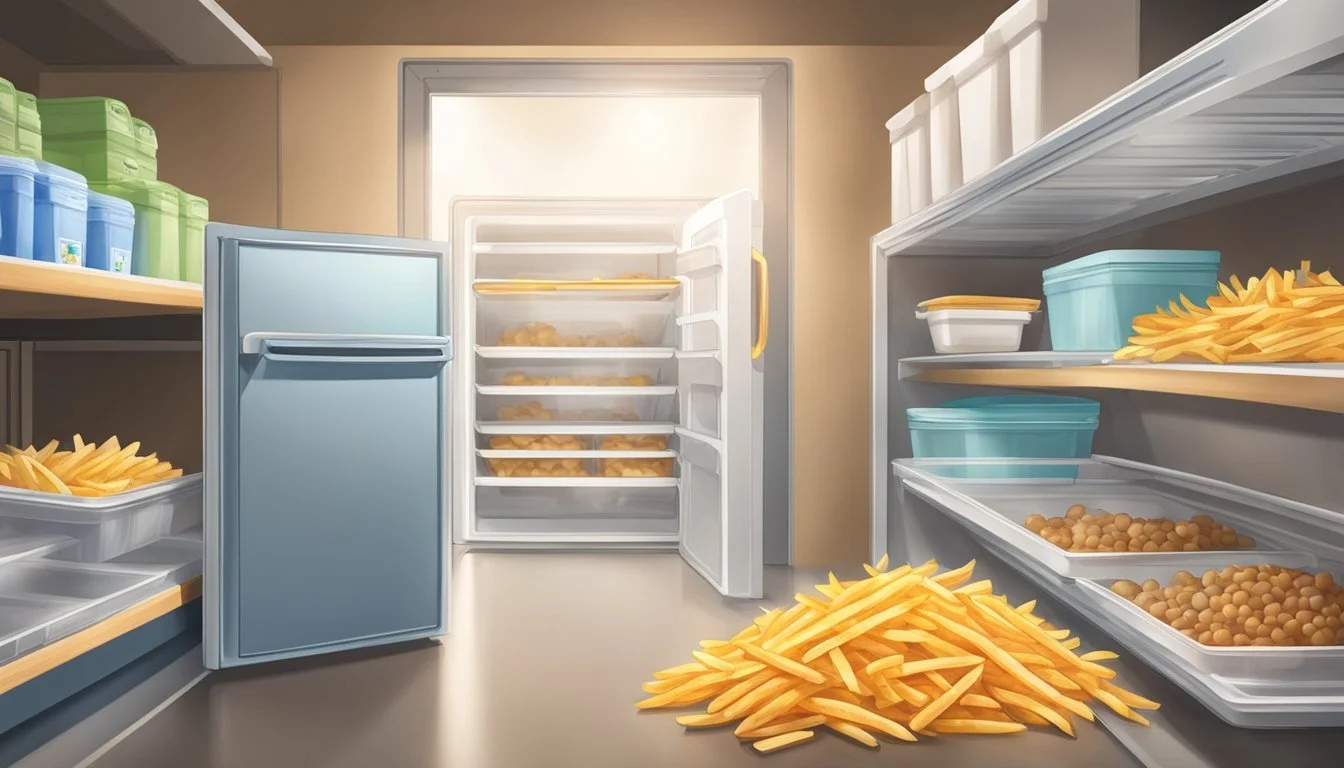Frozen vs Fresh Fries: Which Spud's for You?
French fries are a beloved side dish enjoyed by millions around the world. The debate between frozen and fresh-cut fries has long been a topic of discussion among food enthusiasts and chefs alike. While many assume fresh-cut fries are superior, the reality may surprise you.
Frozen French fries often outperform their fresh-cut counterparts in terms of consistency, convenience, and even quality. This is due to the carefully controlled processing methods used by manufacturers, which ensure optimal starch and water content in each fry. The pre-cooking and freezing process also allows for faster preparation time in restaurants and homes.
Fresh-cut fries, on the other hand, require more labor-intensive preparation. Potatoes must be peeled, cut, soaked, and double-fried to achieve the desired crispy exterior and fluffy interior. While this method can produce excellent results, it is more time-consuming and prone to inconsistencies. Both options have their merits, and the choice ultimately depends on individual preferences and circumstances.
History and Evolution of French Fries
French fries have a contentious origin story, with both France and Belgium claiming to be their birthplace. The first recorded mention of French fries appeared in a Parisian book in 1775.
A French cookbook from 1795 contained the earliest recipe resembling modern French fries. This suggests that the popular side dish may have French roots.
Potatoes were initially met with skepticism in Europe. Germans embraced them, typically serving them mashed, while the French were more hesitant.
The potato's journey to becoming a global staple began in the Andes mountains around 3000 BCE. Spanish conquistadors later brought potatoes to Europe in the 15th century.
French fries gained popularity in the United States during the 20th century. The J.R. Simplot Company commercialized frozen French fries in the 1940s.
In 1967, McDonald's contracted with J.R. Simplot to supply their restaurants with frozen fries. This partnership helped catapult French fries to widespread popularity.
The frozen fry industry carefully controls the balance of starch and water content in potatoes. Before processing, potatoes contain about 21% starch solids and 79% water.
Freezing techniques remove excess moisture from potatoes, ensuring a consistent texture and taste. This process has made frozen fries a preferred choice for many chefs and restaurants.
Fundamentals of Potato Quality
Potato quality depends on several key factors, including variety selection and chemical composition. These elements influence texture, flavor, and cooking performance.
Potato Varieties and Their Impact on Quality
Russet potatoes are often preferred for fries due to their high starch content and low moisture. They produce crispy exteriors and fluffy interiors when fried. Yukon Gold potatoes offer a buttery flavor and golden color, making them another popular choice. Red potatoes have a waxy texture and hold their shape well, but are less common for fries.
Potato size and shape affect fry uniformity. Larger potatoes yield longer fries, while smaller ones produce shorter cuts. Consistent size is crucial for even cooking.
Some varieties have higher dry matter content, which correlates to better frying performance. These potatoes absorb less oil and become crispier.
The Role of Starch and Sugar in Potato Quality
Starch content directly impacts fry texture. Higher starch levels (20-22%) create crispier fries with a fluffy interior. Lower starch potatoes tend to become greasy and limp when fried.
Sugar content affects fry color and flavor. Excessive sugar leads to overly brown or burnt fries with a bitter taste. Ideal frying potatoes have low sugar levels, typically less than 0.5%.
The starch-to-sugar ratio changes during storage. Cold temperatures can convert starch to sugar, a process called "cold sweetening". This is why potatoes for frying are often stored at warmer temperatures.
Nutrients like potassium and vitamin C contribute to potato flavor. These compounds break down during frying, altering the taste profile of the final product.
Preparation and Cooking Techniques
Cooking frozen and fresh fries involves distinct methods that impact their final texture and flavor. The choice between boiling and frying, as well as the specific techniques employed, can significantly influence the outcome.
Boiling vs. Frying: Methods and Outcomes
Boiling fries is less common but can be used as a pre-cooking step. This method partially cooks the potatoes, reducing overall frying time. Frying remains the most popular technique for both frozen and fresh fries. It creates a crispy exterior while maintaining a fluffy interior.
For frozen fries, direct frying in oil at 350°F (175°C) for 3-5 minutes usually suffices. Fresh-cut fries often require a two-step frying process. The first fry at a lower temperature (325°F/163°C) for 3-4 minutes blanches the potatoes. After cooling, a second fry at 375°F (190°C) for 3-4 minutes creates the final crispy texture.
Air fryers have gained popularity for cooking frozen fries. They use hot air circulation to create a crispy exterior with less oil. Cooking time in an air fryer typically ranges from 15-20 minutes at 400°F (204°C).
Effect of Cooking Techniques on Texture and Flavor
Frying produces the crispiest exterior and most traditional flavor for both frozen and fresh fries. The oil penetrates the surface, creating a golden-brown crust. Frozen fries often have a more uniform texture due to pre-processing.
Boiling before frying can result in a softer interior but may reduce crispiness if not properly dried. It's more commonly used for fresh-cut fries to ensure even cooking.
Air frying creates a crispy exterior with less oil absorption. This technique often results in a slightly drier texture compared to deep-frying. The flavor is less rich but still satisfying for those seeking a healthier option.
Oven-baking is another alternative, producing a drier, less crispy fry. It works better for frozen fries, which are pre-cooked, than for fresh-cut potatoes.
Frozen Fries vs Fresh Fries
Frozen and fresh fries offer distinct experiences in texture, flavor, and convenience. Each type has unique characteristics that impact their taste, preparation, and overall quality.
Definition and Differences
Frozen fries are pre-cut potatoes that undergo processing and freezing before packaging. Fresh fries are made from raw potatoes cut and cooked on-site. Frozen fries maintain a consistent shape and size, while fresh fries may vary in appearance.
Texture is a key difference. Frozen fries often have a uniform crispiness, whereas fresh fries can range from crispy to soft. The moisture content also differs, with frozen fries typically having less moisture due to the freezing process.
Flavor profiles vary between the two types. Fresh fries tend to have a more pronounced potato taste. Frozen fries may have added seasonings or coatings that alter their flavor.
Manufacturing Process of Frozen Fries
The production of frozen fries involves several steps to ensure quality and consistency. Potatoes are washed, peeled, and cut into uniform shapes. They are then blanched to reduce starch content and improve texture.
Next, the fries undergo a partial frying process. This step helps create a crispy exterior while maintaining a soft interior. The fries are then quickly frozen to preserve their quality.
Many manufacturers carefully control the starch and water content of the potatoes used. This balance is crucial for achieving the desired texture when cooked. Some brands may add coatings or seasonings during processing to enhance flavor and crispiness.
Advantages and Disadvantages of Each Type
Frozen fries offer convenience and consistency. They have a longer shelf life and require minimal preparation. Restaurants can quickly cook frozen fries, reducing preparation time during busy periods.
Fresh fries provide a more authentic potato flavor and texture. They allow for customization in cut size and seasoning. However, they require more labor and skill to prepare properly.
Nutritionally, fresh fries may have a slight edge. They typically contain fewer additives and preservatives. Frozen fries might have added oils or sodium from processing.
Cooking time differs between the two. Frozen fries generally cook faster due to their pre-cooked nature. Fresh fries often require a two-step frying process for optimal crispiness, which takes longer.
Quality can vary for both types. Well-prepared fresh fries can offer superior taste and texture. High-quality frozen fries can rival fresh ones in crispiness and flavor when cooked properly.
Nutritional Comparison and Health Considerations
Frozen and fresh fries differ in their nutritional profiles and potential health impacts. The processing and storage methods for frozen fries can affect their nutrient content and introduce additional ingredients.
Impact on Diet and Health
Frozen fries often contain more calories and sodium than fresh-cut fries. A typical serving of frozen fries has around 80-100 calories and 15-20 mg of sodium. Fresh fries may have fewer calories if prepared without added oils.
The cooking method significantly influences the nutritional value of both types. Deep-frying adds extra fat and calories. Baking or air-frying can reduce these additions.
Frozen fries may lose some nutrients during processing and storage. However, they can still provide potassium and vitamin C. Fresh fries potentially retain more nutrients if prepared and cooked immediately.
Additives and Preservatives in Frozen Fries
Frozen fries commonly contain additives to maintain texture and extend shelf life. These may include:
Dextrose (a type of sugar)
Sodium acid pyrophosphate (to maintain color)
Preservatives like sodium bisulfite
Some brands use natural alternatives or minimize additives. Organic frozen fries, like Cascadian Farm's, often have fewer additives.
These ingredients help frozen fries achieve consistent quality and convenience. However, they increase the processed nature of the food. Fresh-cut fries typically lack these additional ingredients, offering a simpler nutritional profile.
Consumer Perceptions and Preferences
Consumer opinions on frozen versus fresh fries vary based on factors like taste, texture, and convenience. Brand recognition and nutritional considerations also play significant roles in purchasing decisions.
Brand Influence on Buying Decisions
Well-known potato brands often sway consumer choices in the frozen fry market. Many shoppers trust familiar labels, associating them with consistent quality and taste. Some brands emphasize their use of premium potatoes or special cooking techniques.
Packaging and ingredient lists can impact purchasing decisions. Clear labeling of "all-natural" or "no artificial additives" may attract health-conscious buyers. Brands that highlight their crispy texture or restaurant-style preparation methods often appeal to those seeking an authentic fry experience at home.
Marketing campaigns focusing on convenience and long shelf life have boosted frozen fry popularity. Some brands now offer gourmet or specialty cut options to compete with fresh alternatives.
Public Attitude Towards Frozen and Fresh Fries
Fresh fries are often perceived as superior in taste and texture. Many consumers associate them with a crispy exterior and fluffy interior. Restaurants and fast-food chains frequently promote their use of fresh-cut potatoes.
However, frozen fries have gained ground in recent years. Improvements in freezing technology have led to better texture retention. Some frozen varieties now rival fresh fries in crispiness and overall eating experience.
Convenience is a major factor driving frozen fry popularity. Their long shelf life and easy preparation appeal to busy households. In contrast, fresh potatoes require more time and effort to prepare.
Salt content is a consideration for some consumers. While both types can be salty, frozen fries often have precisely controlled seasoning levels. This consistency can be appealing to those watching their sodium intake.
Varieties and Innovations in French Fries
French fries continue to evolve with new flavors, shapes, and cooking methods. The industry has seen significant advancements in both product diversity and production technology.
Emerging Trends in French Fry Varieties
Crinkle cut fries have gained popularity for their extra-crispy texture and ability to hold sauces well. Straight cut fries remain a classic choice, offering a balance of crispiness and potato flavor.
Sweet potato fries have emerged as a healthier alternative, providing a unique taste and additional nutrients. Some manufacturers now offer seasoned varieties, incorporating flavors like garlic, herb, or spicy blends.
Colors have become a point of differentiation. Purple and blue potato fries add visual appeal to plates. Some brands have introduced mixed vegetable fries, combining potatoes with carrots or parsnips for added nutrition and flavor complexity.
Technological Advancements and Their Effects
Flash-freezing techniques have revolutionized frozen fry production. This method preserves texture and flavor better than traditional freezing, resulting in fries that crisp up more consistently when cooked.
New coating technologies have improved fry crispiness and holding times. Some manufacturers use corn-based coatings to enhance crunch and maintain heat retention.
Automated cutting systems now produce fries with precise dimensions, ensuring uniform cooking. This technology allows for consistent quality across large batches, benefiting both restaurants and consumers.
Advanced sorting systems use optical sensors to remove defective potatoes and fries, improving overall product quality. These systems can detect color variations, ensuring only the best fries make it to the final package.
Packaging, Storage, and Shelf Life
Proper packaging and storage are crucial for maintaining the quality and safety of frozen and fresh french fries. The shelf life of fries depends on several key factors related to how they are packaged and stored.
Impact of Packaging on Frozen Fries
Packaging plays a vital role in preserving frozen french fries. Airtight, moisture-resistant bags protect fries from freezer burn and ice crystal formation. Many commercial frozen fry packages use nitrogen gas flushing to remove oxygen, further extending shelf life.
Properly sealed packages can keep frozen fries fresh for 12-18 months. Once opened, fries should be used within 2-3 months for best quality. Some packages include resealable closures to maintain freshness after opening.
Preservatives like sodium acid pyrophosphate may be added to frozen fries to prevent discoloration and extend shelf life. These help the fries maintain their appearance and texture during long-term freezer storage.
Optimal Storage Conditions for Freshness
Temperature is critical for frozen fry storage. Fries should be kept at a constant 0°F (-18°C) or below. Fluctuating temperatures can cause moisture loss and quality degradation.
Fresh-cut fries have a much shorter shelf life of only 1-2 hours at room temperature. Refrigeration can extend this to 3-5 days when stored in an airtight container. Excess moisture should be removed to prevent sogginess.
For both frozen and fresh fries, minimizing air exposure is key. Air promotes oxidation and microbial growth. Vacuum-sealed or tightly wrapped packaging helps exclude air and preserve freshness.
Proper rotation of stock using the "first in, first out" method ensures fries are used before expiration. Regular freezer maintenance prevents temperature fluctuations that can impact fry quality.
Impact on the Food Industry
The frozen vs fresh fries debate has significantly influenced market dynamics and consumption habits. This has led to shifts in both commercial food service and home cooking practices.
Market Trends and Consumption Patterns
Frozen french fries have seen a surge in popularity, driven by convenience and longer shelf life. The frozen food industry has capitalized on this trend, expanding product offerings and improving quality. Sales of frozen fries increased notably during recent years, with many consumers perceiving them as a cost-effective alternative to fresh options.
Consumer preferences have evolved, with a growing acceptance of frozen fries as a viable side dish option. This shift has prompted retailers to allocate more freezer space to potato products. Manufacturers have responded by introducing new varieties, including gourmet and health-conscious options.
Food Service vs. Home Preparation
Restaurants have embraced frozen fries due to their consistency and ease of preparation. Many establishments now rely on pre-cut, frozen products to ensure uniform quality and reduce labor costs. This trend has impacted the supply chain, with potato processors adapting their operations to meet increased demand for frozen products.
Home cooking habits have also changed. Consumers appreciate the convenience of frozen fries, which can be quickly prepared in ovens or air fryers. This has led to innovations in packaging and cooking instructions to prevent over-browning and achieve restaurant-quality results at home.
Food manufacturers have developed specialized coatings and preparation methods to improve the texture and taste of frozen fries, narrowing the perceived quality gap with fresh-cut options.







